-
Free

 FREE
FREECulture for health: Implications and opportunities for cultural districts
PublicationsAuthored by Rosie Dow for GCDN, Culture for health: implications and opportunities for cultural districts, explores how cultural districts can promote health and wellbeing through arts activations; the challenges they face in doing this work, and potential ways forward for new partnerships, policy reform and shifts in ways of working to better serve communities. This report, developed in partnership with the Social Biobehavioural Research Group, University College London (UCL SBB), provides leaders, artists, scholars, and policymakers with the strategies and considerations to promote public health outcomes in cultural districts, including ensuring sustainable and equitable access through arts activations, community-centred events and more.FREEFREE -
Free
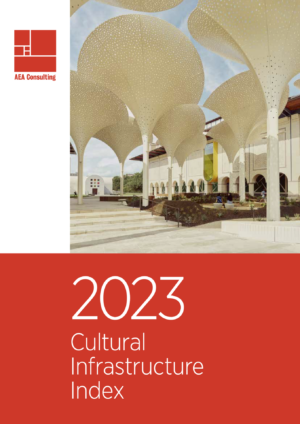
 FREE
FREEAEA Consulting’s 2023 Cultural Infrastructure Index
PublicationsGCDN is pleased to present AEA Consulting's 2023 Cultural Infrastructure Index (CII), a measure of major investments in capital projects in the cultural sector with budgets of US$10 million or more, that were either announced or completed in 2023. Now in its eighth year, the CII provides a long-term view on trends in the field.FREEFREE -
Free

 FREE
FREEAEA Consulting’s 2022 Cultural Infrastructure Index
PublicationsGCDN is pleased to present AEA Consulting's 2022 Cultural Infrastructure Index. Established in 2016, the Index seeks to measure investment in capital projects in the cultural sector globally, identifying projects with a budget of US$10 million or more that were publicly announced or completed within a calendar year. “Cultural infrastructure” comprises museums/galleries, performing arts centers, multifunction arts venues, and cultural hubs or districts, and projects tracked include new buildings, renovations, expansions, and adaptive reuse.FREEFREE -
Free
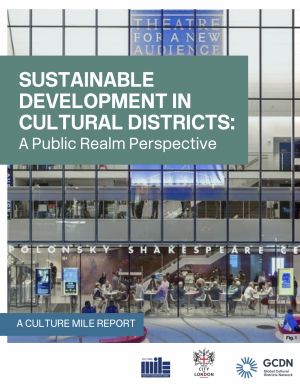
 FREE
FREESustainable Development in Cultural Districts
PublicationsThe City of London Corporation with the support of the Global Cultural Districts Network (GCDN), has commissioned a research to understand how cultural districts can embed sustainable development practices in their work and by extension, in our cities.FREEFREE -
Free

 FREE
FREECultural Districts and Innovation: a Focus on the Global South
PublicationsThis report, commissioned by the Global Cultural Districts Network (GCDN) and written by Tarek Virani, looks at “how cultural districts in the Global South are either innovating or creating the conditions to meet the needs of new and existing challenges”. As such, it provides a fresh perspective on what the challenges of our time might mean for cultural districts worldwide balancing the push and pull of globalisation and localism. Ultimately, our understanding of how innovation in cultural districts occurs in the Global South reinforces what we know about cultural districts generally – as much as this is a global phenomenon, the local context always determines the shape and impact of any effort.FREEFREE -
Free
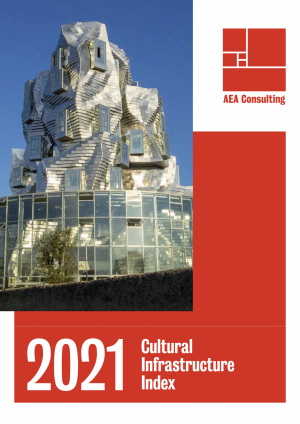
 FREE
FREEAEA Consulting’s 2021 Cultural Infrastructure Index
PublicationsAEA Consulting is pleased to present the 2021 Cultural Infrastructure Index. Now in its sixth edition, the Index seeks to measure investment in capital projects in the cultural sector globally, identifying projects with a budget of US$10 million or more that were publicly announced or completed within a calendar year. “Cultural infrastructure” comprises museums/galleries, performing arts centers, multifunction arts venues, and cultural hubs or districts, and projects tracked include new buildings, renovations, expansions, and adaptive reuse.FREEFREE -
Free
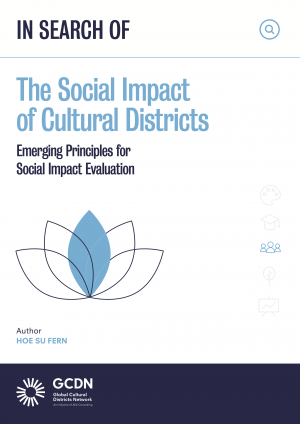
 FREE
FREEIN SEARCH OF: The Social Impact of Cultural Districts – Emerging Principles for Social Impact Evaluation
PublicationsAcross the globe, the transformative powers of cultural districts have been widely noted, particularly with respect to how they add value to the lives of individuals and to society as a whole. Yet the ways in which cultural districts deliver and evaluate their social impact have yet to be fully explored. Importantly, there is a stark absence of rigorous methodologies and assessment frameworks to assist cultural districts in articulating, planning, delivering, and evaluating their social value proposition. Based on findings from a follow-up study to our 2019 report on Social Impact, untimely terminated due to Covid-19, this publication highlights there is much to be learned about the social impact of cultural districts.FREEFREE -
Free
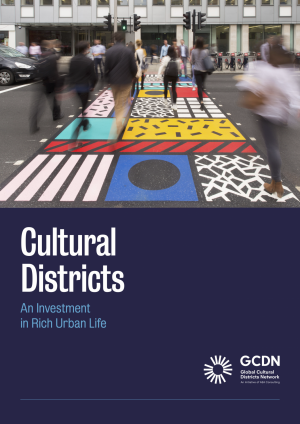
 FREE
FREECultural Districts: An Investment in Rich Urban Life
PublicationsCultural districts strengthen our cities and communities and support the development of thriving places and people. Support for cultural districts is a high-return investment as their value is immense, multi-layered and far-reaching. However, while those benefits are embraced by many, not all believe it. Increasingly, cultural leaders are being challenged to demonstrate how supporting the arts and culture advances other agendas; from attracting investment to fostering liveable communities and enabling public safety. GCDN developed this advocacy guide to help! It makes a case for support of cultural districts as a necessity for building thriving places and people. Importantly, it provides a core set of ideas and baseline language that cultural leaders can use to communicate with stakeholders such as policy-makers, sponsors and patrons.FREEFREE -
Free
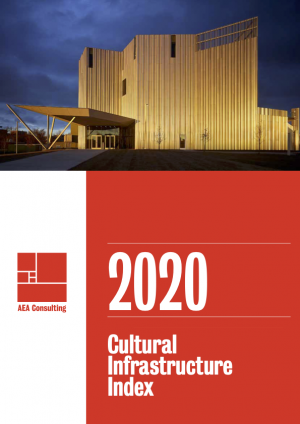
 FREE
FREEAEA Consulting’s 2020 Cultural Infrastructure Index
PublicationsAEA Consulting is pleased to present the 2020 Cultural Infrastructure Index. Now in its fifth edition, the Index seeks to measure investment in capital projects in the global cultural sector, identifying projects with a budget of US$10 million or more that were publicly announced or completed within the last calendar year.FREEFREE -
Free
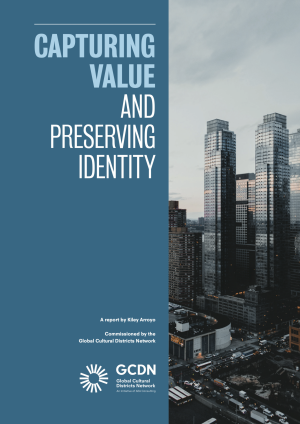
 FREE
FREECapturing Value and Preserving Identity
PublicationsThis report, commissioned by the Global Cultural Districts Network (GCDN) and written by Kiley Arroyo describes diverse tools that cultural districts can use to spur investment and create new revenue streams while protecting the local character and neighborhood identity. It is the first consolidated source of advice on finance mechanisms, public policies, and equity-centered practices — known as value-capture tools — that can be used to recover and reinvest increases in real estate value that benefit communities as well as property owners and developers.FREEFREE -
Free

 FREE
FREEAEA Consulting’s 2019 Cultural Infrastructure Index
PublicationsAEA Consulting is pleased to announce the release of the 2019 Cultural Infrastructure Index. Now in its fourth edition, the Index seeks to measure investment in capital projects in the global cultural sector, identifying projects with a budget of US$10 million or more that were publicly announced or completed within a calendar year.FREEFREE -
Free
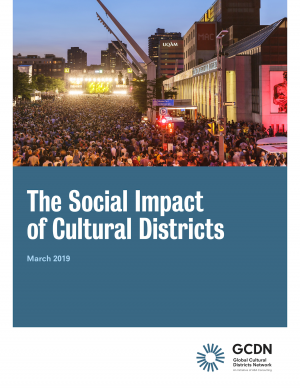
 FREE
FREEThe Social Impact of Cultural Districts
PublicationsThis report, commissioned by the Global Cultural Districts Network (GCDN) and written by Professor Geoffrey Crossick analyses the different ways social impact is defined; draws out current good practice, highlighting gaps and challenges; and suggests a framework and principles for future action.FREEFREE -
Free
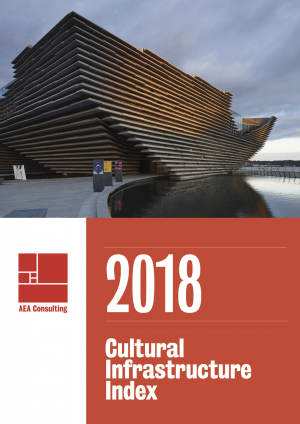
 FREE
FREEAEA Consulting’s 2018 Cultural Infrastructure Index
PublicationsAEA Consulting is pleased to present the 2018 Cultural Infrastructure Index. Now in its third edition, the Index seeks to measure investment in capital projects in the cultural sector, identifying projects with a budget of US$10 million or more that were publicly announced or completed within a calendar year.FREEFREE -
Free

 FREE
FREEGovernance Models of Cultural Districts
PublicationsThis report, commissioned by the Global Cultural Districts Network (GCDN), draws on primary research and a literature review to capture good practices, and identifies which stakeholders should be “at the table” for informed and effective decision making and oversight. The research has also revealed the range of business models that underpin these governing entities, reviewing how cultural districts are generating revenue and expending it. The research is intended to be fully international in scope, with useful lessons for GCDN members and other practitioners around the world.FREEFREE -
Free
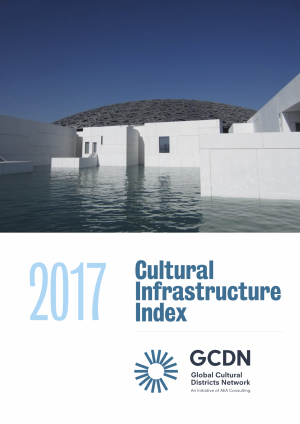
 FREE
FREEAEA Consulting’s 2017 Cultural Infrastructure Index
PublicationsThe Cultural Infrastructure Index, undertaken for the Global Cultural Districts Network by AEA Consulting, seeks to measure investment in capital projects in the cultural sector, identifying projects with a budget of US$10 million or more. This year’s findings reveal an increase in both the number and value of completed projects over 2017, with a significant bump in the Middle East, reflecting the completion of the Louvre Abu Dhabi. North America continues to lead in the number of projects, followed by Europe and Asia. While many believe the era of the “starchitect” may be ending, cultural infrastructure strategies are now firmly part of the public policy discourse in many countries. The private sector now appears to be driving a further wave of investment, expanding the definition of “culture” further into entertainment and experience.FREEFREE -
Free
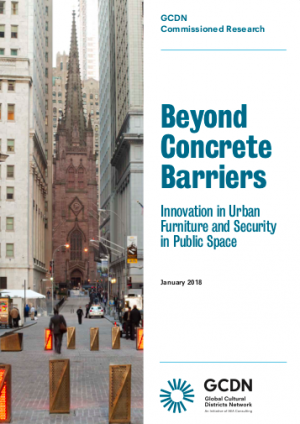
 FREE
FREEBeyond Concrete Barriers: Innovation in Urban Furniture and Security in Public Space
PublicationsSafety is a fundamental, if often unspoken, premise of successful placemaking, informing both the design and programming of public spaces. More and more placemaking efforts are focused on the creation or revitalization of public spaces, often in downtown areas involving heavy foot and vehicle traffic. For these projects to be successful, it is critical that the design, technology and security oversight be effective but also recessive, requiring imagination and intelligence to be applied to the design process from the start. Managers of cultural districts, Business Improvement Districts, and other public spaces are seeking innovative solutions for securing their public spaces in ways that retain the beauty and attraction of these areas.FREEFREE
